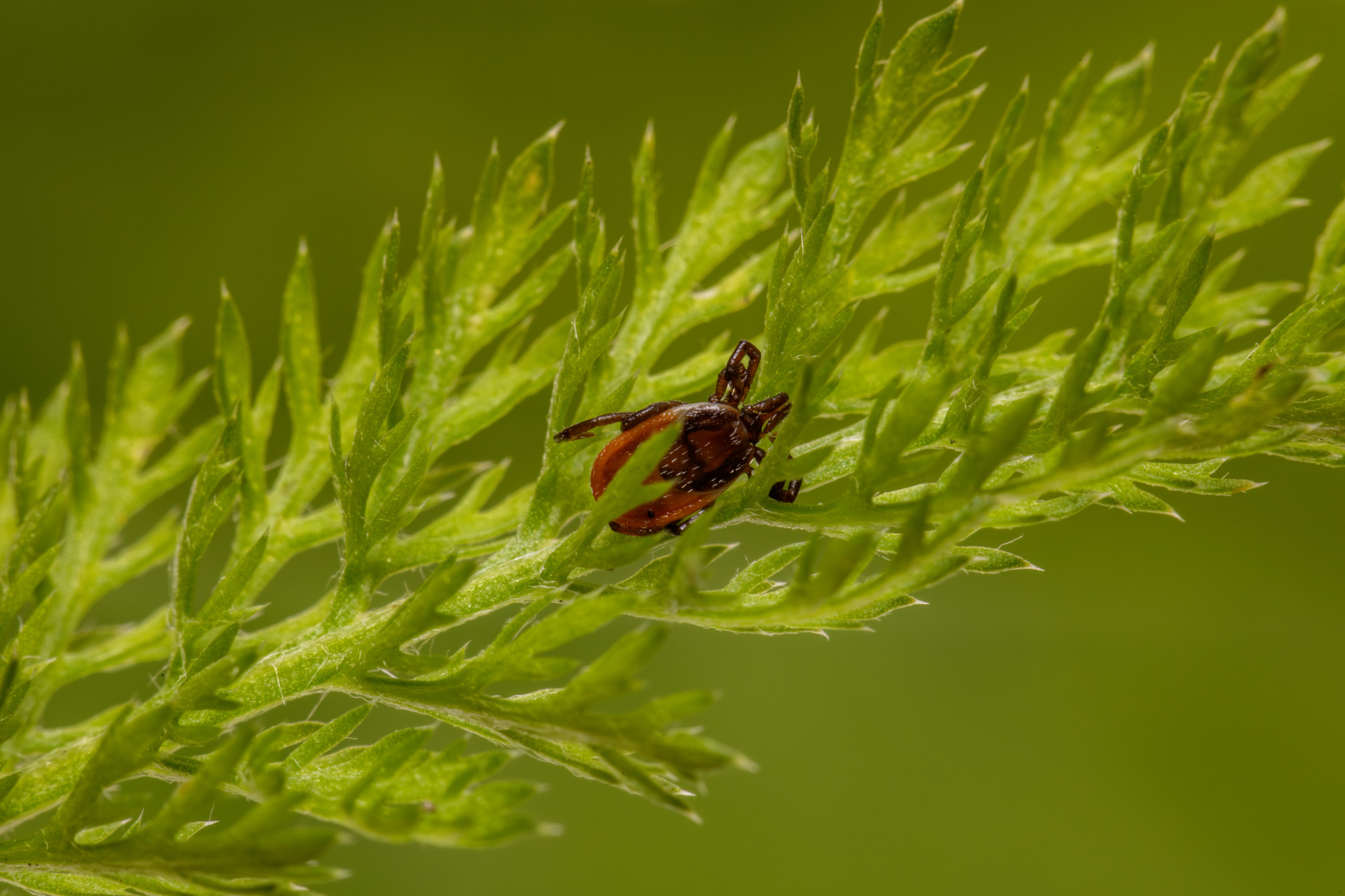The Castor Bean Tick (Ixodes ricinus), also known as the sheep tick or wood tick, is a species of hard tick in the family Ixodidae. It is a prominent ectoparasite in Europe, transmitting various pathogens to both humans and animals. This tick’s life cycle, adaptability, and vector role make it a critical subject in public health and veterinary studies.
Physical Description
- Size:
- Unfed adults: 2–4 mm long.
- Engorged females: Can swell up to 11 mm after feeding.
- Coloration:
- Unfed individuals are reddish-brown.
- Engorged females appear grayish due to their distended abdomens.
- Body Features:
- Flattened, oval-shaped body.
- Mouthparts (capitulum) equipped with hooks for attaching to the host.
- Sexual Dimorphism:
- Males are smaller and do not engorge as much as females.
Life Cycle
The life cycle of Ixodes ricinus consists of four stages: egg, larva, nymph, and adult. It typically spans 2–3 years, depending on environmental conditions.
- Eggs:
- Laid in clusters by engorged females in vegetation.
- Larvae:
- Six-legged, tiny, and seek small hosts like rodents or birds.
- Nymphs:
- Eight-legged, larger, and target medium-sized hosts such as rabbits or hedgehogs.
- Adults:
- Fully mature, feeding on larger hosts like deer, livestock, or humans.
Each stage requires a single blood meal to progress to the next.
Behavior
- Questing:
- Ticks climb vegetation and extend their front legs to latch onto passing hosts.
- Feeding:
- Attaches firmly to the host, feeding for several days by piercing the skin and secreting anticoagulants.
Habitat
- Found in woodlands, grasslands, and shrubs, particularly in humid environments.
- Thrives in areas with rich wildlife populations and dense vegetation.
Distribution
- Native to Europe, extending into parts of North Africa and Western Asia.
- Increasingly observed in northern regions due to climate change.
Role as a Vector
The Castor Bean Tick is a major vector for various pathogens, including:
- Lyme Disease: Caused by the bacterium Borrelia burgdorferi.
- Tick-borne Encephalitis (TBE): A viral infection affecting the central nervous system.
- Anaplasmosis: Bacterial infection caused by Anaplasma phagocytophilum.
- Babesiosis: A protozoal infection similar to malaria, caused by Babesia spp.
- Rickettsiosis: Caused by Rickettsia spp., leading to spotted fever.
Prevention and Control
- Personal Protection:
- Wear long sleeves and pants in tick-prone areas.
- Use insect repellents containing DEET or permethrin.
- Tick Checks:
- Inspect body and clothing after outdoor activities, especially in wooded or grassy areas.
- Habitat Management:
- Reduce tick habitats by clearing leaf litter and tall grass near human dwellings.
- Pet Protection:
- Use tick collars or veterinary-approved treatments for pets.
Conservation and Ecological Role
While considered a pest, ticks play a role in ecosystems by serving as prey for some birds and small mammals. However, their role as vectors poses a significant threat to public health.
Interesting Facts
- Long Feeding Duration: A single feeding session can last 2–10 days, depending on the stage and host.
- Adaptive Survival: Can survive long periods without a blood meal—up to a year or more.
- Climate Influence: Warmer temperatures have expanded their range and activity periods.
Summary
The Castor Bean Tick (Ixodes ricinus) is a key player in the dynamics of vector-borne diseases. Understanding its biology and controlling its spread are critical for mitigating the risks it poses to human and animal health. Proper preventive measures and public awareness remain essential in regions where this tick is prevalent.
Views: 339
Subscribe to the newsletter:
